Update: I couldn't desolder any LEDs from the donor board without destroying them. They simply refuse to come off. This raises the question for me:
Are they even soldered there or manufactured as they are together, and cannot be desoldered?
My flashlight's LED is broken, the tip of the LED's housing is exposed and it does not light up.
As the title says, will it be feasible using a single LED from a 220V LED light bulb to repair my 1.5V flashlight?
How do I know the voltage rating (or more precisely I need the turn on voltage below 1.5V(?) (maybe not? --> see Edit2 below) ) of each LED inside my sub 1$ LED lamp (9W in my case)?
Since it is extremely cheap this bulb does not fully have a switching regulator. It is just a "regulator" that probably has huge ripples, which we don't see because it sneakily blanks at 60Hz.
Here is the picture of the schematic:

There are almost a dozen LEDs in there, even if I take one out and replace it with a short, the lamp will be overdriven a bit but surely work (with acceptable loss in its runtime, it was cheap anyway.)
Edit: This method won't work on a 1.5V AA powered LED flashlight because the LED lamp has LEDs which only turn on barely at 4.5V. I tested with my 12V computer power supply rail and only 2 of the series LEDs turn on. I couldn't go up to 3. Threshold voltages are very high on these types of cheap lighting LEDs for some reason. Why?
Edit2: My flashlight has a simple circuit doing something to the raw 1.5V before feeding it to the LED. Does anyone have any idea what this does? I wonder how many volts my LED had as threshold before it broke down.


